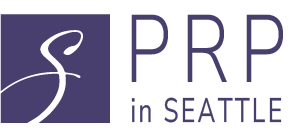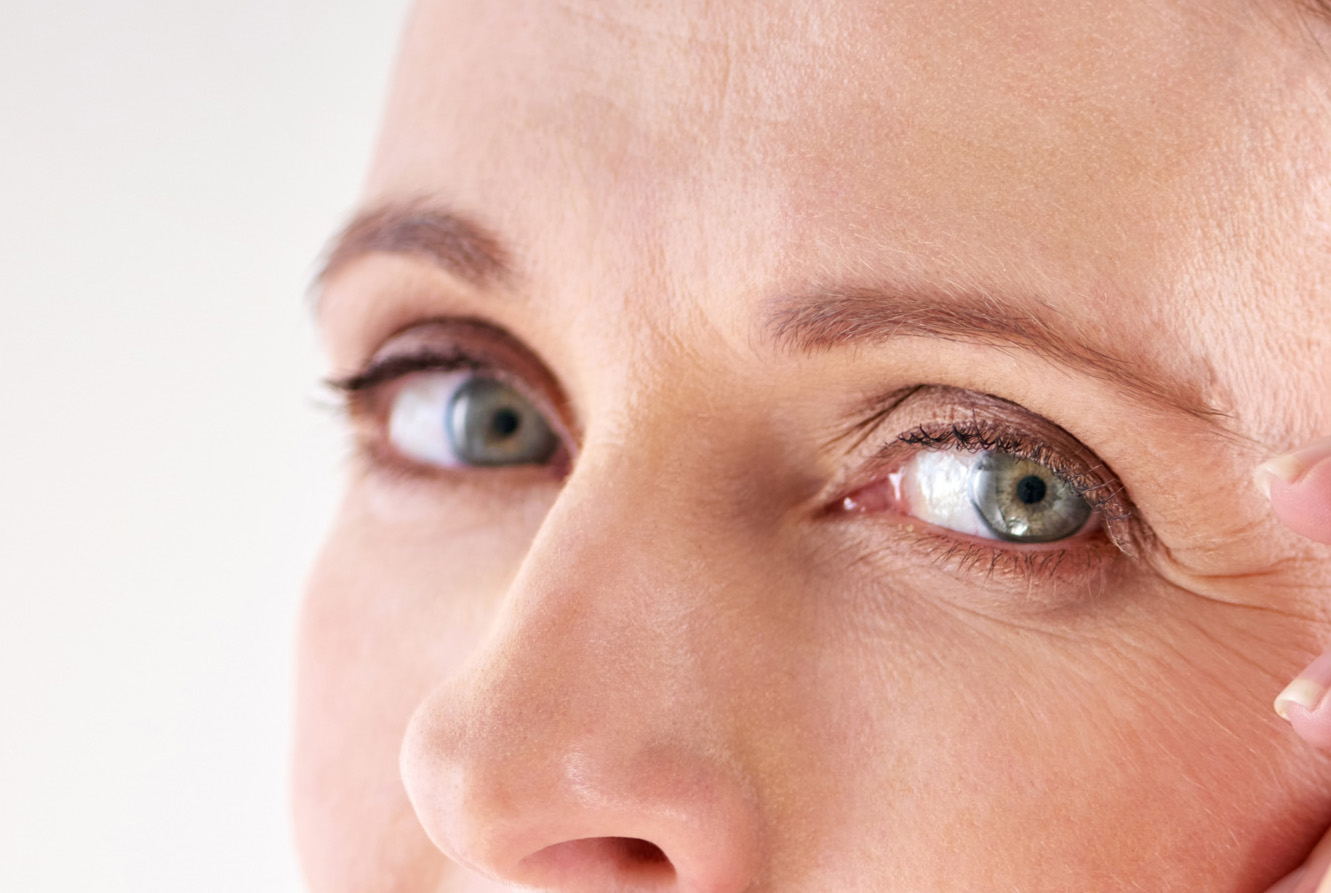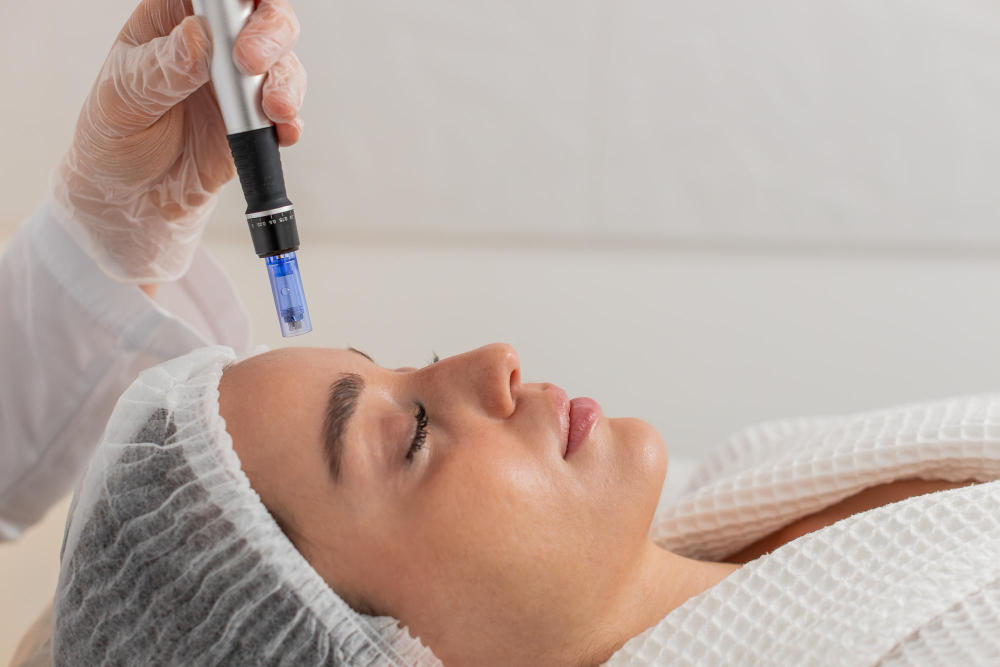Persistent dark circles and hollow under-eyes can make you look tired even though you feel perfectly energized. Patients often decide to use eye creams or concealers, only to discover that the tear trough area still shows fatigue and aging. If you have been looking for a more effective solution, Platelet-Rich Plasma (PRP) treatment might help. This regenerative procedure harnesses your body’s growth factors to improve the tone, texture, and elasticity in the delicate under-eye area. In this blog, we’ll talk about how PRP Under Eye Treatment functions to naturally soften dark circles.
What Are Tear Troughs?
Under the eyes, the area often referred to as the “tear trough” is the groove or hollow that runs from the inner corner of the lower eyelid outward and downward toward the cheek. With age, volume loss, thinning skin, pigmentation, fluid retention, and genetic factors combine to make dark circles, hollows, and fatigue-looking shadows more noticeable. Under-eye dark circles can result from a combination of:
- Thinner skin under the eyes (allowing underlying vascular discoloration or shadows to show more).
- Volume loss or descent of fat and soft-tissue support in the tear trough area.
- Pigmentation or hyperpigmentation and vascular congestion beneath the eye.
Understanding these contributing factors helps you identify what kind of treatment may suit your specific under-eye concern.
What Is PRP Under-Eye Treatment?
In simple terms, PRP is a component of your own blood enriched with platelets and growth factors; when injected into targeted areas (such as the under-eye), it can stimulate collagen, tissue regeneration, and improved skin quality.
In the tear trough or under-eye region, these treatments can:
- Thicken the skin in the infra-orbital region, reducing the appearance of shadowing from thin skin.
- Improve texture, tone, and color of the under-eye skin (improving crepiness or laxity).
- Provide subtle volumization without traditional filler material.
Because these treatments use your own blood and stimulate your own healing response, they are often seen as a more “natural” alternative to synthetic fillers in the under-eye region.
Who Is a Good Candidate for PRP Tear Trough Treatment?
Ideal candidates typically:
- Are in good health, without major medical issues affecting healing (such as bleeding disorders).
- Have under-eye hollows, mild to moderate dark circles, crepey skin, or early volume loss, rather than severe fat pad herniation or very deep hollows.
- Understand that results are gradual (over weeks/months), may require more than one session, and are part of a longer-term skin health strategy.
- Are comfortable with minor downtime (bruising or swelling for a few days) and can follow aftercare guidance.
At PRP In Seattle, we’ll always perform a consultation, review your history, examine the under-eye area, and help you understand whether PRP is the right match.
What to Expect during the Treatment
We begin with a detailed consultation where we’ll review your under-eye anatomy, health history, and expectations, and walk you through the protocol. We’ll also explain any pre-treatment steps.
The procedure itself usually involves:
- A small blood draw (similar to standard lab work).
- Centrifugation or processing to isolate the platelet-rich portion or fibrin-rich gel.
- Application of numbing cream and then injection of the PRP into the tear trough region using a precise technique.
Immediately after the procedure, you may experience slight swelling, redness, or bruising in the under-eye area. These effects are common and often resolve in a few days.
Recovery After PRP Under-Eye Treatment
Recovery from PRP tear trough injections is generally smooth, with most patients able to return to normal activities quickly. You may notice mild swelling or bruising, which usually resolves within a few days. These effects are temporary and part of your body’s natural healing process. It’s best to avoid strenuous exercise or activities that increase circulation to the face for the first 24–48 hours, as this can worsen swelling or bruising.
Simple aftercare makes a big difference:
- Apply a cold compress to the area for short intervals during the first day.
- Sleep with your head slightly elevated to minimize puffiness.
Keeping the area clean, staying hydrated, and avoiding alcohol or smoking can help with healing and collagen stimulation. Within a few days, your under-eye area should look calmer and refreshed, and over the following weeks, you’ll start to notice gradual improvements.
PRP vs. Under-Eye Fillers
Let’s help you understand how regenerative treatments differ from standard tear trough fillers:
- Volume vs regeneration: Hyaluronic acid (HA) fillers add immediate volume (“filling”) to hollows. PRP instead stimulates your body’s own tissue for collagen formation, thicker skin, and gradual volume improvement.
- Material: Fillers are synthetic or semi-synthetic substances. PRP uses your own blood components, which means fewer risks of allergic reaction.
- Results timeline: Fillers may deliver a visible effect almost immediately. PRP results take weeks to months and often require a series of treatments.
Questions You Should Ask Your Provider
Before deciding on an under-eye treatment, clarity is essential. Here are questions you may want to ask:
- How many sessions would you recommend for my under-eye anatomy and condition?
- Can you show me before/after images of patients with similar concerns?
- How much downtime or bruising is typical in your hands?
- What aftercare will you provide, and how will follow-up work?
- If I’ve had filler under the eyes previously, how would that affect my suitability for PRP?
Preparing these questions ahead of time can help you feel more informed and confident in your decision-making process.
Wondering Where to Start?
If you’ve been noticing hollow under-eyes, dark circles, or that tired appearance despite your best efforts, it may be time to consider a different approach. At PRP In Seattle, we offer PRP EZ Gel Tear Trough Treatments. Our surgeons take time to answer your questions, provide a thoughtful consultation, and design a treatment plan that fits your needs and goals. Contact us today at (206) 279-2112 to schedule your personalized consultation.


